Gyeongju Gyerim Forest (경주 계림)
1.2 Km 24780 2020-07-06
Gyo-dong, Gyeongju-si, Gyeongsangbuk-do
+82-54-779-8743
Gyerim Forest is located between the Cheomseongdae Observatory and Wolseong Fortress. The forest is thickly populated by ancient zelkova and willow trees rooted on gently sloping hills and along the small stream in the northwest part of the woods. According to legend, the forest is closely associated with myths surrounding the birth of Alji, the founder of the Gyeongju Kim clan. As such, it is designated national Historic Site No. 19.
Legend has it that King Talhae heard a rooster crying from deep inside the Sirim Woods. Chancellor Hogong was sent to investigate. Upon arriving, he found a rooster crying underneath a tree on which hung a golden box. Hogong immediately reported his find to the king, who instructed him to bring the golden box into the palace. The king opened the box and found a small child inside, Kim Alji. The forest, which had previously been called ‘Sirim’ or ‘Gurim’, became known as ‘Gyerim’, ('gye’ meaning rooster). The name Gyerim was also used to refer to the Silla kingdom.
Alji was adopted as the king’s son, but because the crown was passed on to King Pasa of the Park family, he never ascended the throne. The Kim clan later became the royal bloodline with the coronation of King Naemul some years later.
The memorial stone recording the birth of Kim Alji was erected in the third year of King Sunjo's rule in the Joseon dynasty. Located close to the royal fortress of Silla, the forest is still deeply revered as the mystical birthplace of the first ancestor of the royal Kim clan of Silla. Yellow canola blossoms along the path connecting Daereungwon with Gyerim and Banwolseong only add to the magical ambiance of the forest.
Gyeongju Royal Tomb of King Naemul (경주 내물왕릉)
1.2 Km 13450 2020-04-04
Gyo-dong, Gyeongju-si, Gyeongsangbuk-do
+82-54-779-6100
King Naemul was the 17th monarch of the Silla Kingdom (in power from 356 to 402) and became the second king of the Kim family name. King Naemul was known as the first king to initiate the king title of ‘Maripgan’ and was known for spreading cultural advancements from China to the Korean people. When the allied forces of Baekje and Japan attacked, he asked Gwanggaeto the Great of Goguryeo for help and led the people to victory, contributing to the increased strength of the Silla Kingdom. After his rule, the throne was exclusively ceded to members of the Kim family clan.
The royal tomb of King Naemul is a large mound (22 m in diameter and 5.3 m in x_height) that sits on the northern hill of the Confucian school of Gyeongju. The edge of a natural stone is exposed around the bottom of the mound, pointing to the fact that the inner chamber tomb was made of stone. In the historical document Samguk Sagi (History of the Three Kingdoms), no records are found about the tomb, but the Samguk Yusa (Memorabilia of the Three Kingdoms) describes the king’s tomb as being located in the southwest of Cheomseongdae, which is consistent with the tomb’s location.
Gyeongju Ssambap Street (경주 쌈밥거리)
1.3 Km 0 2024-02-08
9 Gyerim-ro, Gyeongju-si, Gyeongsangbuk-do
Gyeongju Ssambap Street, developed around the Daereungwon Ancient Tombs in Gyeongju, offers a diverse culinary experience. A highlight is ssambap (leaf wraps and rice), a dish featuring fresh vegetables accompanied by substantial side dishes like fish, meat, and doenjang jjigae (soybean paste jjigae) made from homemade soybean paste. Additionally, this street presents a variety of snacks, including Hwangnam ppang (Hwangnam bread) prepared with red beans and flour, and jjondeugi, a traditional chewy snack made from cornmeal and sugar. Nearby attractions include the Cheomseongdae Observatory, Donggung Palace and Wolji Pond, Woljeonggyo Bridge, and the Gyeongju National Museum.
Gyeongju Daereungwon Ancient Tomb Complex (경주 대릉원 일원)
1.3 Km 13734 2022-12-26
9, Gyerim-ro, Gyeonju-si, Gyeongsangbuk-do
+82-54-750-8650
Gyeongju Daereungwon Tomb Complex consists of five tombs, Ancient Tombs of Gyeongju Nodong-ri, Noseo-ri, Hwangnam-ri, Hwango-ri, and Inwang-ri. The tombs are distributed in Hwangnam-dong, Gyeongju-si, and are located in the Daereungwon area. Within Daereungwon Tomb Complex is Cheonmachong Tomb, which was excavated in 1973. Furthermore, Hwangnamdaechong Tomb was excavated between 1973 and 1975, and is a set of twin tombs belonging to a presumed married couple.
SOSEOLJAE [Korea Quality] / 소설재(첨성대점) [한국관광 품질인증]
1.3 Km 1156 2020-09-09
46, Poseok-ro 1050beon-gil, Gyeongju-si, Gyeongsangbuk-do
+82-54-7357-7412
As a traditional Korean guesthouse with modern facilities but with some traditional features of a Korean house such as wooden floor and ceramic tiled roof intact, Soseoljae is located next to Cheomseongdae in Gyeongju. It also has an old well in the garden. Each guestroom is furnished with bathroom and air conditioner for the convenience of the guests. The single-story guesthouse has a total of 11 rooms that can accommodate 2-4 people depending on the size of the room. The two-story stand-alone guesthouse located right next to the main gate can accommodate six, and it has a small tea room. The guesthouse has a cafe at the entrance. It's conveniently located near Cheomseomdae, Daereungwon Ancient Tombs, and Hwangnyongsaji (Hwangnyongsa Temple Site) as well as Gyeongju Station and Gyeongju Express Bus Terminal.
Yongganggukbap (용강국밥)
1.3 Km 171 2021-03-20
70, Bonghwang-ro, Gyeongju-si, Gyeongsangbuk-do
+82-54-745-6446
The locals’ favorite restaurant that sells Korean-style soups. The best menu at this restaurant is rice soup. This Korean dishes restaurant is located in Gyeongju-si, Gyeongsangbuk-do.
Geumgwanchong Tomb (금관총)
1.3 Km 16785 2020-03-18
Noseo-dong, Gyeongju-si, Gyeongsangbuk-do
+82-54-779-6100
Geumgwanchong, located in Noseo-dong, Gyeongju, is a tomb from the Silla Kingdom (B.C. 57∼A.D. 935). It is one of the three tombs that belong to the Noseo-dong Tombs in downtown Gyeongju.
Geumgwanchong Tomb is regarded as the tomb of a king before or after the reign of King Ji-Jeung during the early 6th century (500~514). It is not known exactly to whom this tomb belongs.
It was found in September 1921, when the fief was chopped while a civilian was leveling the ground to widen his building land. The first relic found in this tomb was a gold crown, geumgwan, and so
the tomb took its name. Ornaments such as gold belts, earings, bracelets, saddlers and crockery of the Three Kingdoms Era (when Goguryeo, Baekje and Silla were separated, later unified by Silla in 676 AD) were dug up from the tomb. There were numerous relics, with beaded relics alone numbering over 30,000.
The original structure of Geumgwanchong was 13m high with a 50m diameter. The relics from this tomb were moved and are now
preserved at the Gyeongju National Museum.
Cheonmachong Tomb (Daereungwon Ancient Tombs) (천마총 (대릉원))
1.3 Km 110909 2023-07-14
9, Gyerim-ro, Gyeongju-si, Gyeongsangbuk-do
+82-54-743-1925
Daereungwon Ancient Tombs are one of the most well-known sights in Gyeongju, a history park home to 23 small and large ancient tombs. The area is dotted with tranquil trails among the tombs like the largest tomb in Hwangnam-dong, Hwangnamdaechong Tomb; Cheonmachong Tomb, the place where Cheonmado, a saddle flap painting, was excavated from; and the tomb of King Michu, nicknamed the “Tomb of the Bamboo Warrior.”
Cheonmachong Tomb, excavated in 1973, has a x_height of 12.7 meters and a diameter of 50 meters. Its excavation unearthed many artifacts, such as the famous Gold Crown from Cheonmachong Tomb. Its name comes from Cheonmado, a mudguard saddle flap with a painting of a heavenly horse. Cheonmachong Tomb is the only tomb in the Daereungwon Ancient Tombs to be opened to the public.
The tomb is thought to have been constructed between the late 5th century and early 6th century. Artifacts excavated from the tomb include a gold crown, gold cap, gold waist belt, gold diadem, and gilt-bronze shoes worn by the buried. The gold crown, in particular, is known as the largest and the most elaborate of all gold crowns unearthed in Korea. The artifacts themselves can be found in Gyeongju National Museum, so don’t miss the chance to see them in person.
Another must-visit site is the Daereungwon Magnolia Photo Area, a lone magnolia tree standing between the beautiful curves of ancient tombs.
Bitgguri (빛꾸리)
1.3 Km 1 2023-07-12
16-1 , Sonhyoja-gil, Gyeongju-si, Gyeongsangbuk-do
+82-54-777-4421
This cafe is located in a small alley near Cheonmachong Tomb (Daereungwon Ancient Tombs), in a renovated old hanok and yard. This place's seating is on the floor, so the traditional atmosphere comes alive. Bitgguri’s signature menu items are grilled saekdong injeolmi (bean-powder-coated rice cake) and tangerine ginger tea. Dig into the colorful rice cakes, grilled and coated with powdered soybeans, and traditional tea to fully enjoy the classic charms of Gyeongju. The rice cake is enjoyed together with a malt syrup called jocheong, a traditional substitute for honey. Tangerine ginger tea is a traditional tea made with tangerine and ginger. It is quite effective for colds and is full of natural vitamins, so one can feel healthy just by drinking the beverage. The café has a garden decorated with traditional earthenware pots and stone fences topped with tiles, allowing one to enjoy a charming view along with the dessserts. The cafe also hosts one-day classes, such as bojagi (square clothes made to be wrapped around items for transportation) making.
Daereungmyojji (대릉묘찌)
1.4 Km 0 2024-04-08
1085 Poseok-ro, Gyeongju-si, Gyeongsangbuk-do
Try the unique combination of beaded ice cream and sweet rice cake, a traditional Korean dessert, at Daereungmyojji on Hwangridan Street near Daereungwon Ancient Tombs. The business offers take-out only, and there are no seats. Three menus are available: mugwort flavor sweet rice cake with pea filling, chocolate flavor sweet rice cake with filling made with Belgian dark chocolate, and sweet rice cake with red bean filling and crispy walnuts. Each serving of sweet rice cakes is cut into three or four pieces and served in a cup. In addition to being a unique dessert, the packaging has a cute rabbit drawing on it. The gift set contains eight pieces, perfect for people who want to enjoy a lot of desserts.

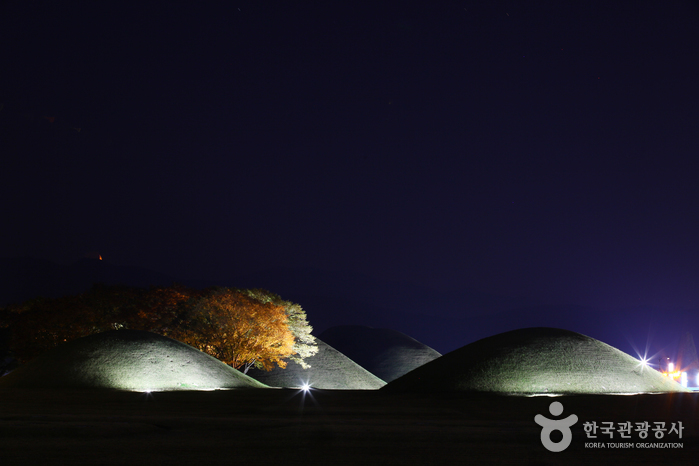
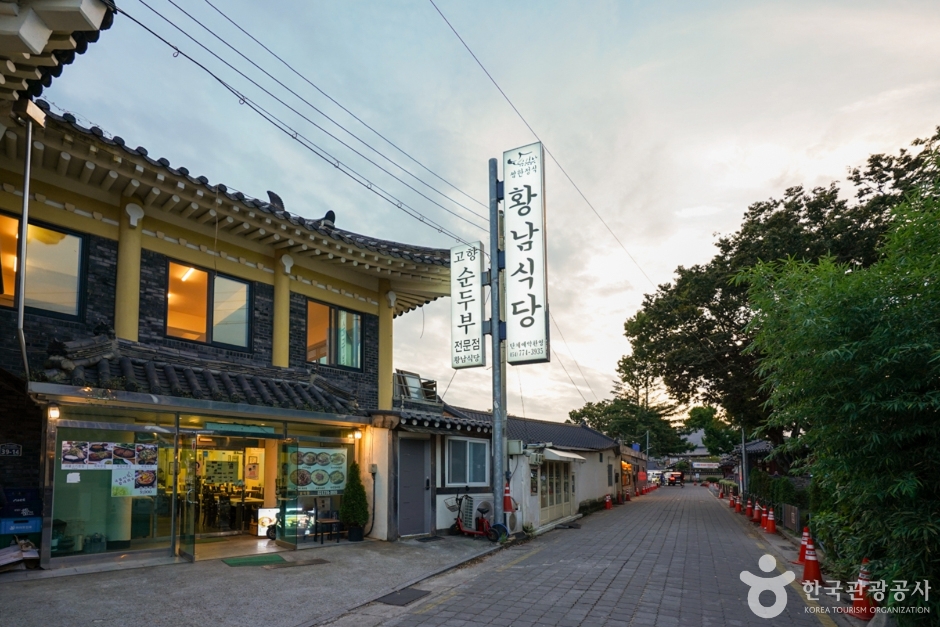

![SOSEOLJAE [Korea Quality] / 소설재(첨성대점) [한국관광 품질인증]](http://tong.visitkorea.or.kr/cms/resource/61/2530261_image2_1.jpg)
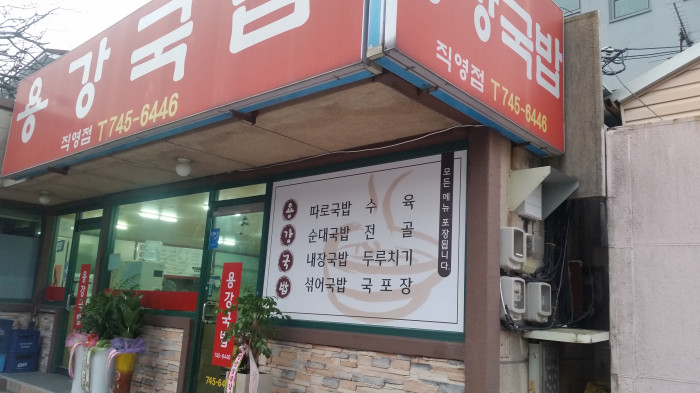
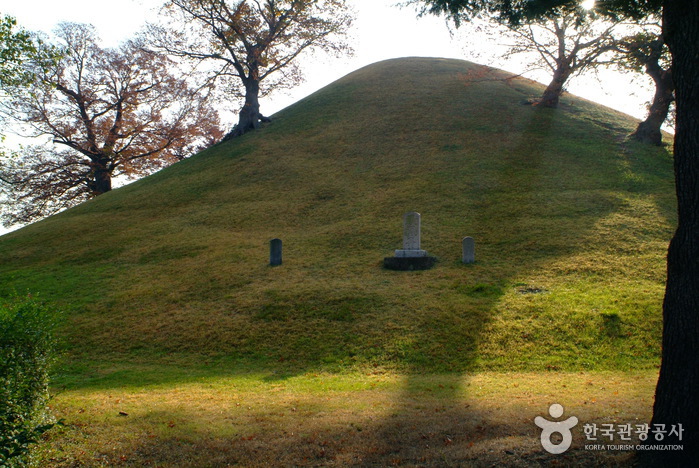
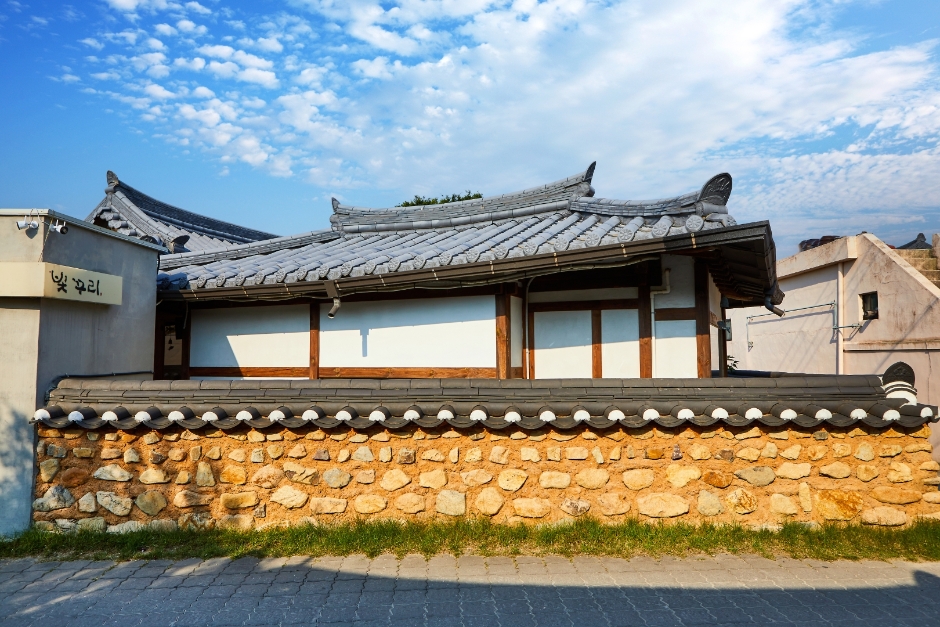
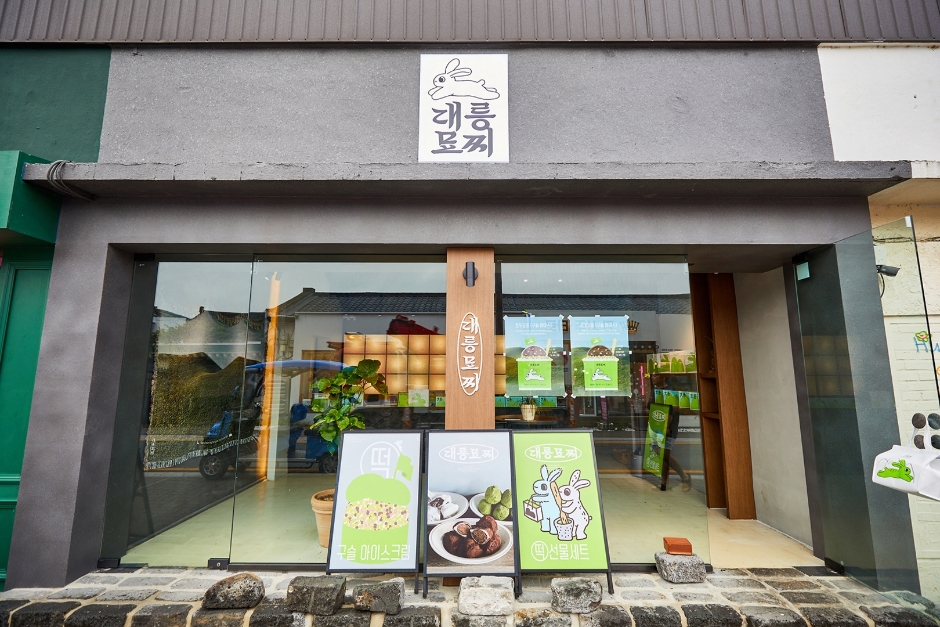
 English
English
 한국어
한국어 日本語
日本語 中文(简体)
中文(简体) Deutsch
Deutsch Français
Français Español
Español Русский
Русский